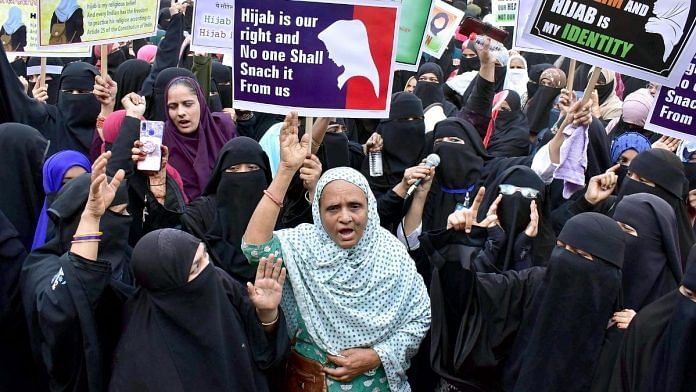On March 15, the Hon’ble Karnataka High Court upheld a ban on wearing hijabs in classrooms by holding that wearing a hijab was not part of an essential religious practice under Islam. The Court upheld the state government’s order that invoked section 133(2) of the Karnataka Education Act, 1983 and directed students of all government schools to wear the uniform fixed by the state. While students of private schools may wear uniforms prescribed by the management committees of the school. Much of the attention with respect to the judgement has been focused on the meaning and analysis of the essential religious practice test, another important issue that the Court has only briefly touched upon has not received similar scrutiny, which is the court’s evaluation of the constitutionally protected guarantee of non-discrimination.
The High Court has addressed the point of discrimination very briefly when it has noted that the Karnataka State Government’s order on dress code, dated February 5, 2022 was ‘religion-neutral’ and ‘universally applicable’ to all the students. However, the Court’s observation regarding the facially neutral criteria of uniform dress code flies in the face of established discrimination law jurisprudence in the country, especially that of indirect discrimination which has been recognised by the Supreme Court of India. Therefore, the author respectfully disagrees with the Court’s analysis regarding the same, as the Court has not only failed to recognise that facially neutral criteria are capable of having a disproportionate impact on a particular community or group of individuals, but has also failed to appreciate the intersectional nature of the present case, where a group of students, namely female, Muslim girls, are being discriminated upon on account of both their religious and gender identities.
The Supreme Court in 2020, in the case of Lt. Col. Nitisha and Ors. v. Union of India explicitly recognised the doctrine of indirect discrimination which is closely tied with substantive equality under Article 14 and Article 15(1) of the Constitution of India. In this judgement, the Supreme Court recognised that indirect discrimination occurs “when a provision, criterion or practice would put persons having a status or a characteristic associated with one or more prohibited grounds at a particular disadvantage compared with other persons, unless that provision, criterion or practice is objectively justified by a legitimate aim, and the means of achieving that aim are appropriate and necessary.” Thus, indirect discrimination takes place when there exists a policy that is supposedly neutral and applies in the same manner for all persons but disadvantages a group of people who share a protected characteristic, the policy in this context being the uniform dress code applicable to all students and the protected characteristic being the students’ religious and gender identity.
Also read: Is hijab a choice? India can’t defend secularism on knife’s edge, like France
Notably the petitioners had relied heavily on a judgement from South Africa, MEC for Education: Kwazulu-Natal and Others v. Pillay, where the Constitutional Court of South Africa deliberated on a matter where a school objected to a Hindu girl wearing a nose stud at school as it violated the school’s dress code, while the student claimed that she wore the nose stud pursuant to her religious and cultural beliefs. The South African Court ruled that though the dress code was neutral and applied to all the students, it had a disparate impact on students belonging to certain cultures and religions; further noting that such a dress code hindered certain students from expressing themselves fully, and the failure to reasonably accommodate beliefs could relegate certain groups to the margins of society.
Strangely, the Karnataka High Court disregarded this judgement on the basis that the case involved a nose stud, which is ‘ocularly insignificant’, an adornment which, according to the Court, by virtue of being small could not, in any way affect the uniformity which the dress code intends to enforce. This precise observation by the High Court shows not only how the Court has missed the mark in this case by a wide margin, but also why the current case is perfect fit for the application of the doctrine of indirect discrimination. As is evident from the Court’s statement, the Court does not have a problem with ‘ocularly insignificant’ artefacts of religious expression, but apparently only with ‘ocularly significant’ ones, which leads to a directly disproportionate impact, and burden being placed on female Muslim students, whose identity is grounded at the intersection of their gender and religion. An appeal against the judgement upholding the hijab ban has already been filed before the Supreme Court, where hopefully, the Court will more closely examine the point of indirect discrimination, take note of the intersectional essence of the controversy and prioritise upholding the dignity and agency of female Muslim students.
The author is a student at ILS Law College, Pune. Views are personal.







